Mucha exhibition sheds light on Art Nouveau
Writer: Claudia Wei | Editor: Lin Qiuying | From: Original | Updated: 2025-09-02
If you happen to see a long line outside the Nanshan Museum these days, don’t be surprised: an exhibition featuring 44 original works by the legendary Art Nouveau artist Alphonse Mucha is on view.
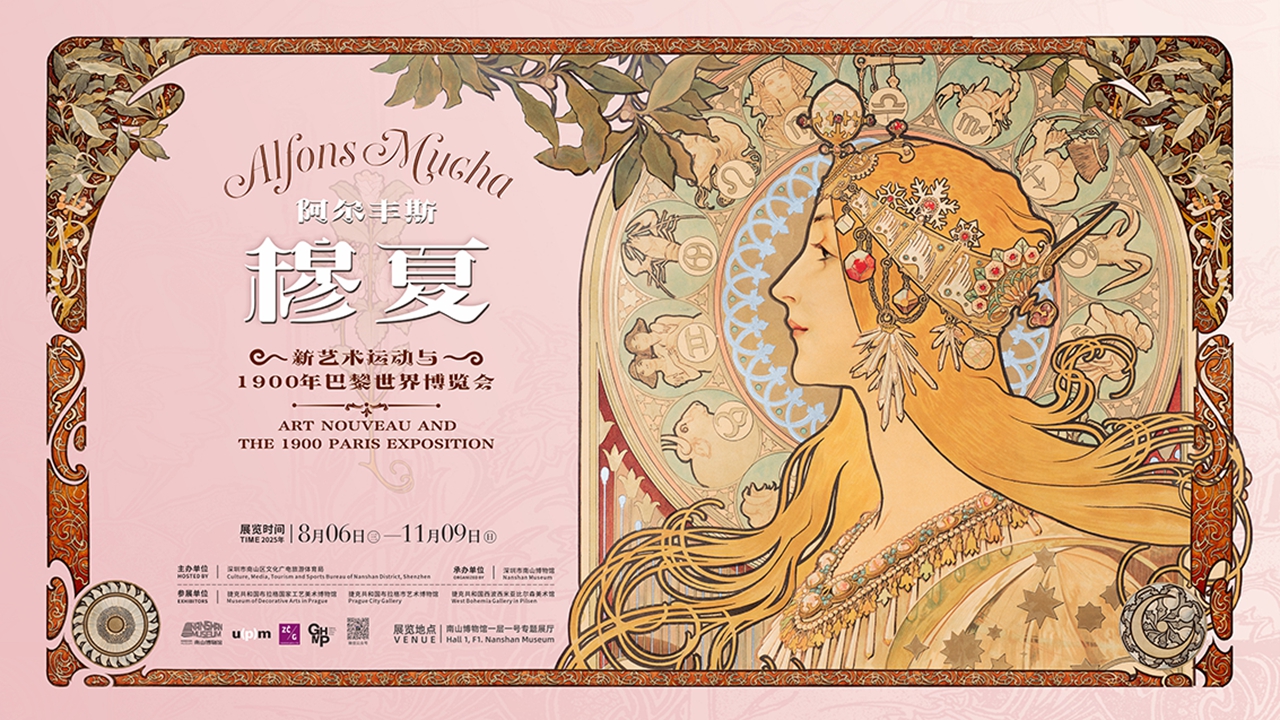
Photos from Nanshan Museum's WeChat official account
Presented in collaboration with the Museum of Decorative Arts in Prague and West Bohemian Gallery in Pilsen — two institutions from Mucha’s native country — the exhibition, titled “Alphonse Mucha -- Art Nouveau and the 1900 Paris Exposition,” will run through Nov. 9 at Nanshan Museum.
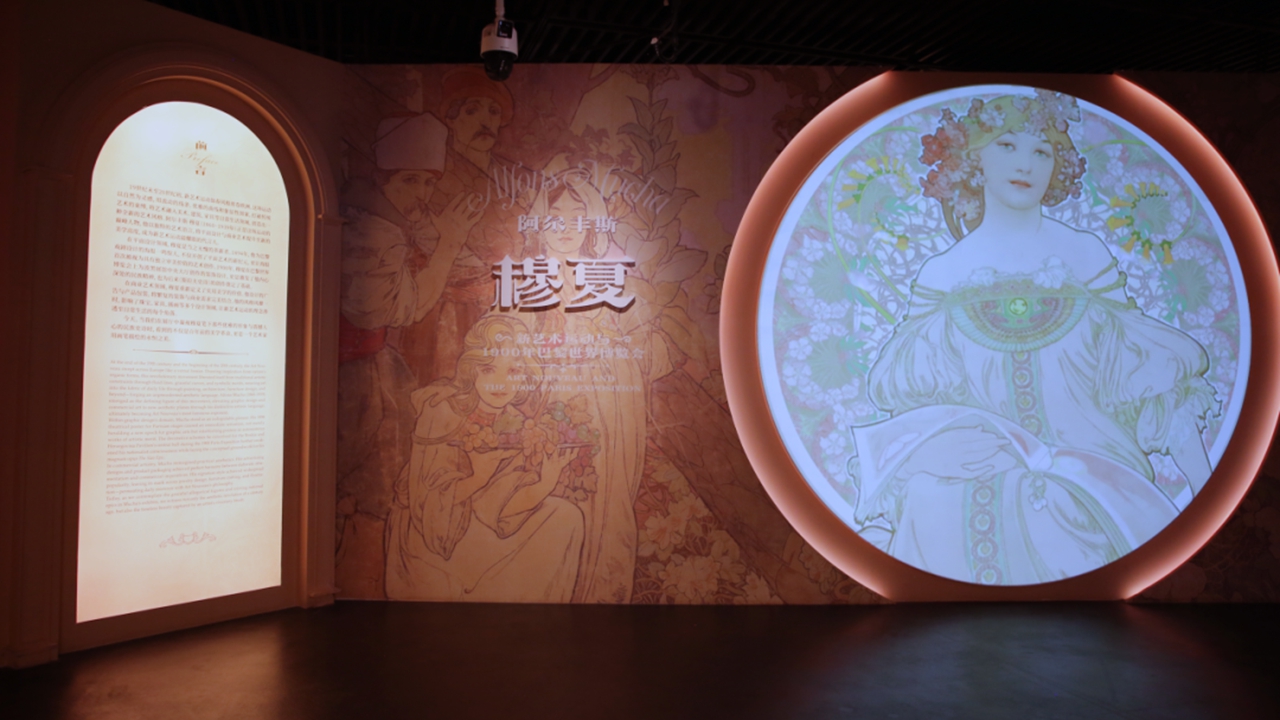
The show presents a total 117 works and sets, including oil paintings, prints, black-and-white photographs, commercial posters and furniture related to the Czech artist organized into five major chapters. It offers a comprehensive look at the artistic trajactory of this Art Nouveau master.
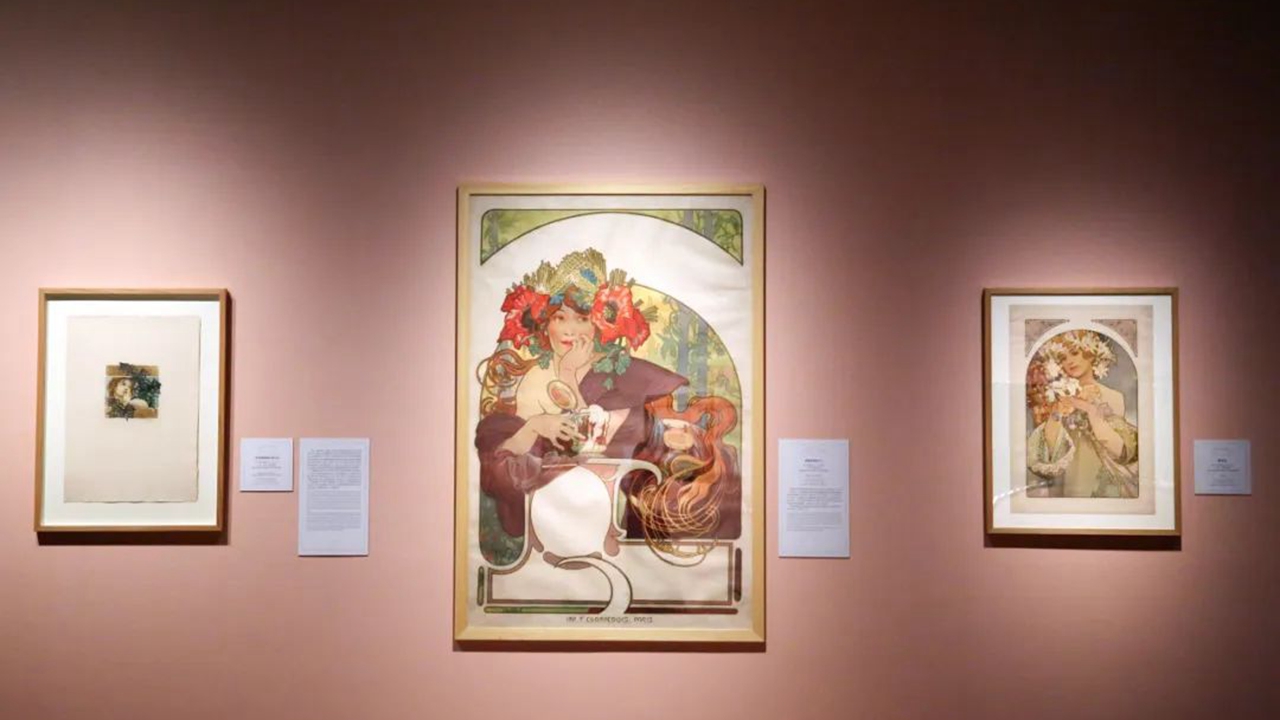
The Art Nouveau movement, which grew out of a far-reaching “decorative arts” trend that swept through Europe and America in the 19th century, captivated the world from the 1890s to the 1910s. Mucha emerged as a leading figure of the movement.
Before he gained fame, Mucha supported himself in Paris by illustrating books. His art career changed dramatically in 1894 when he was unexpectedly commissioned to create a commercial poster for the new play “Gismonda” starring French actress Sarah Bernhardt. Deeply moved by Bernhardt’s performance, Mucha distilled the play’s climactic mood into a striking poster that became an instant sensation across Paris, propelling the Czech artist to stardom.
Also featured in the Nanshan Museum exhibition is Mucha’s poster for “La Dame aux Camelias,” another Bernhardt production. Created in the same period, it is regarded as one of the masterpieces of the Art Nouveau movement.
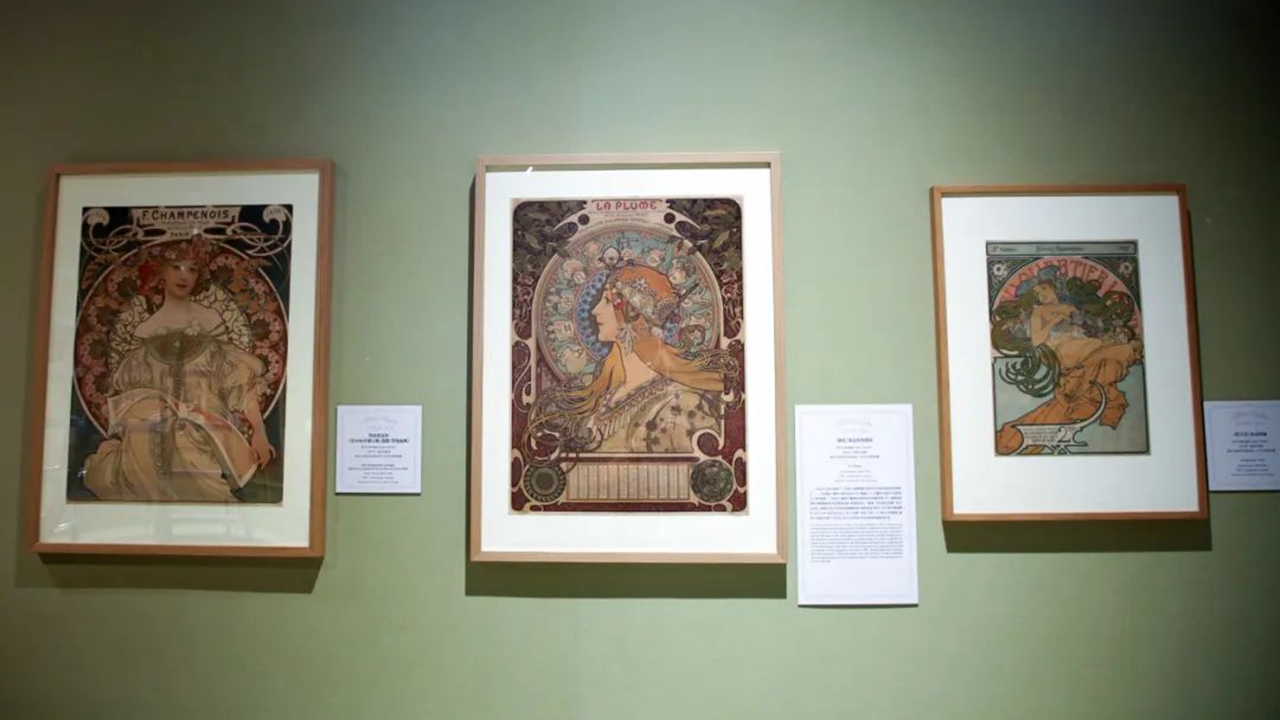
After his rise to fame, Mucha became one of the most sought-after designers in Paris, receiving numerous commercial commissions that spanned posters, advertisements and decorative objects.
In the advertisement for Merz beer, Mucha painted the beer glass as clear as crystal, with the foam almost spilling out of the frame. In the JOB cigarette poster, the woman’s languid pose as she holds a cigarette harmonizes with the intricate background, fully conveying the product’s elegant tone. Through these highly personal creations, Mucha elevated posters from mere advertising to collectible works of art.
Mucha was also widely celebrated for his captivating portrayal of women. The exhibition presents his classic lithographs “Fruits” and “Flowers,” which showcase his singular interpretation of natural forms: plants rendered as graceful, flowing curves, and female figures that coexist harmoniously with floral patterns.
The calendar Mucha created for Plume magazine is one of his most commercially successful decorative prints. The lady, adorned with Byzantine jewels, glances sideways as Mucha transformed the sun, moon and stars into exquisite decorative elements. The design was adopted by dozens of companies, and became one of the most popular visual symbols in Paris at the turn of the 19th century.
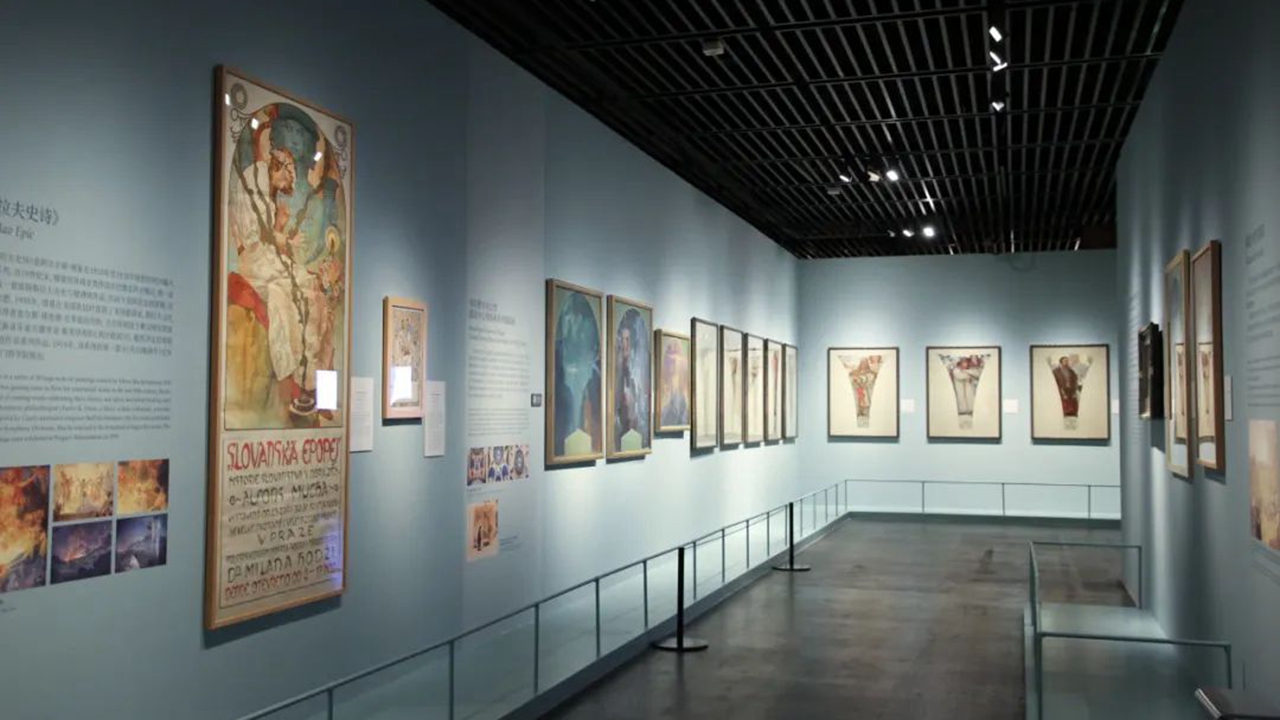
In 1910, having achieved success and renown, Mucha gave up his commercial painting career and returned to the Czech Republic. Out of deep affection for his native soil, Mucha devoted more than a decade to creating “The Slav Epic” and painted a ceiling mural on the theme of “Slavic Unity” for the Mayor’s Hall in Prague City Hall, which stands as a spiritual monument to the Slavic people.

The exhibition not only displays Mucha’s signature works but also presents outstanding pieces by other Art Nouveau artists of the same period.
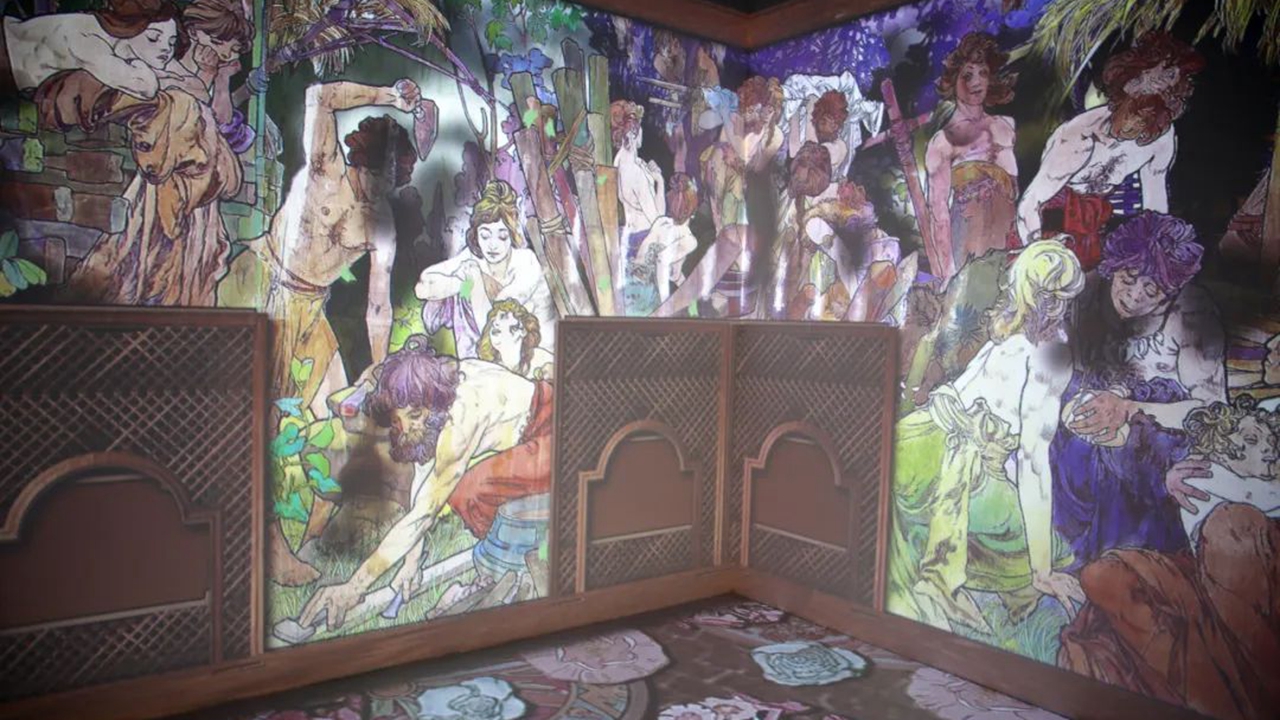
Multimedia videos are also installed in the gallery, playing in sync to present the stories behind the works and dynamic artistic effects, allowing visitors to experience the works’ appeal in a more immersive way.
Exhibition Details
Dates: Through Nov. 9
Hours:
10 a.m. to 6 p.m. (last entry at 5:30 p.m.) Tuesday to Sunday
Saturdays have extended evening hours from 6 p.m. to 9 p.m.
Closed Mondays
Admission: Free, no appointment or reservation required
Venue: 1/F, Showroom 1, Nanshan Museum, Nanshan District (南山区南山博物馆一层一号专题展厅)
Metro: Line 12 to Nantou Ancient Town Station (南头古城站), Exit E3; or Line 1 to Taoyuan Station (桃园站), Exit B